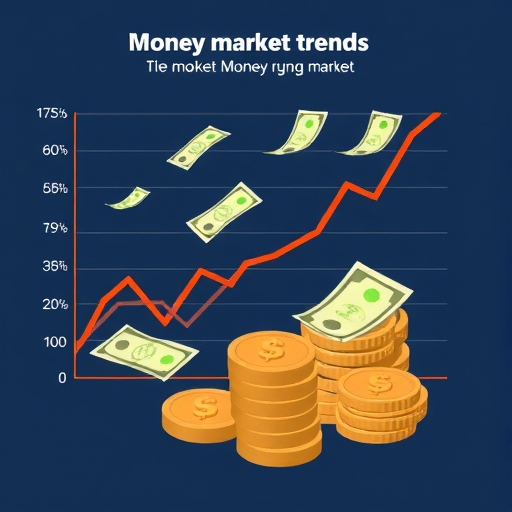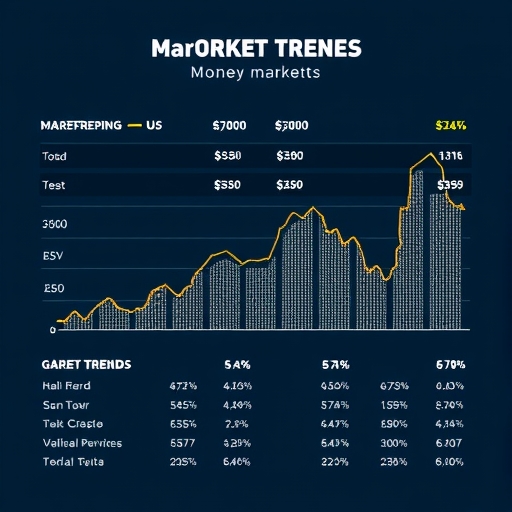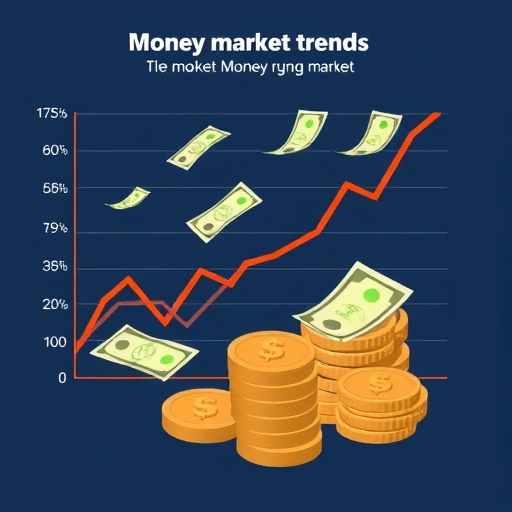Demystifying Treasury Futures: Your Guide to U.S. Government Debt Derivatives
Have you ever wondered how large financial institutions and savvy investors manage their exposure to interest rate changes or bet on the future direction of the economy? The answer often lies in a powerful financial instrument called Treasury futures. Investing in financial derivatives can seem complex, particularly with instruments like these. Whether you are an experienced investor or new to fixed-income trading, a foundational understanding of Treasury futures is crucial for informed decision-making and robust risk management. These contracts serve as an indispensable tool for gaining exposure to U.S. government debt, offering avenues for hedging against interest rate fluctuations and speculating on future economic shifts. This article will provide an in-depth exploration of Treasury futures, equipping you with the essential knowledge to effectively navigate this dynamic segment of the financial market. Understanding the broader economic context, including inflation, growth, and monetary policy, is crucial for interpreting these market movements. 
We will cover what Treasury futures are, how they interact with the broader bond market, the mechanics of trading them, essential risk management techniques, and the latest innovations shaping this crucial market. By the end, you’ll have a clearer picture of how these sophisticated instruments function and why they are so vital to the global financial system.
Understanding Treasury Futures: Core Concepts and Market Foundations
Let’s begin by defining exactly what Treasury futures are. Simply put, they are contractual agreements to buy or sell a specific amount of U.S. government debt—such as U.S. Treasury bonds (T-Bonds), U.S. Treasury notes (T-Notes), or U.S. Treasury bills (T-Bills)—at a predetermined price on a future date. These are derivatives, meaning their value is derived from an underlying asset, in this case, U.S. government securities. Their primary purposes include hedging against interest rate risks, speculating on future interest rate changes, and gaining efficient exposure to the vast U.S. government debt market. Different types of U.S. Treasury securities form the basis for these futures contracts, each with distinct characteristics regarding maturity and yield.
| Security Type | Maturity Range | Key Feature |
|---|---|---|
| U.S. Treasury Bills (T-Bills) | Up to 1 year | Sold at a discount, mature at face value. |
| U.S. Treasury Notes (T-Notes) | 2, 3, 5, 7, and 10 years | Pay fixed interest every six months. |
| U.S. Treasury Bonds (T-Bonds) | 20 and 30 years | Pay fixed interest every six months, longest maturity. |
These contracts possess several key characteristics that make them unique.
- Standardization: All contract terms are uniform, fostering transparent and efficient trading for all participants.
- Leverage: Margin requirements enable control over substantial contract values with minimal initial capital, amplifying both potential profits and risks.
- Liquidity: The market’s high trading volume ensures ease of entry and exit without significant price disruption, making it ideal for dynamic risk management.
They are standardized contracts, meaning their terms (like contract size and delivery months) are uniform across all participants, ensuring fair and transparent trading. They require margin requirements, which allow traders to control a large contract value with a relatively small upfront investment, amplifying both potential gains and losses. The Treasury futures market also boasts high liquidity, meaning you can easily buy or sell contracts without significantly impacting their price. This liquidity makes them excellent tools for risk management. Historically, Treasury futures originated in the late 1970s, introduced by the Chicago Board of Trade (CBOT), now part of the CME Group, to provide a way to manage interest rate volatility.
Understanding the underlying bond market dynamics is fundamental to grasping Treasury futures. The most crucial concept here is the inverse relationship between interest rates and bond prices. When interest rates rise, the value of existing bonds (which pay a lower, fixed interest rate) typically falls, and vice versa. Why? Because new bonds being issued will offer higher yields, making older, lower-yielding bonds less attractive. This inverse relationship is the engine that drives price movements in Treasury futures.
Several economic factors heavily influence these movements. We closely watch indicators like inflation rates, GDP growth, and employment data. These macroeconomic indicators provide crucial insights into the health of the economy and future direction of interest rates. 
| Economic Factor | Impact on Interest Rates | Impact on Treasury Futures Prices |
|---|---|---|
| High Inflation | Tend to rise (Fed may tighten) | Tend to fall (bond prices inverse to rates) |
| Strong GDP Growth | Tend to rise (strong economy) | Tend to fall |
| High Employment | Tend to rise (strong labor market) | Tend to fall |
| Federal Reserve Rate Hike | Directly rise | Directly fall |
Critically, decisions by the Federal Reserve regarding monetary policy (like adjusting the Fed Funds Rate) have a direct and powerful impact on interest rates and, consequently, on Treasury futures prices. Furthermore, the constant interplay of supply and demand dictates market direction. The U.S. government issues debt to finance its spending, creating the supply, while global investors, seeking safety and certainty, drive the demand for U.S. government debt.
Trading Mechanics and Strategic Applications in the Futures Market
So, how do you actually trade these contracts? Treasury futures are primarily traded on regulated exchanges, with the Chicago Board of Trade (CBOT) and the Intercontinental Exchange (ICE) being prominent venues. These exchanges provide the infrastructure for transparent price discovery and efficient execution. When you take a position, you’re either going “long” or “short.” A long position in Treasury futures anticipates falling interest rates, which would lead to rising bond prices. Conversely, a short position is taken by those who expect interest rates to rise, leading to falling bond prices. Understanding these directional bets is fundamental to engaging in the futures market. 
A key aspect of futures trading is the concept of margin and mark-to-market. When you open a futures position, you’re required to put up an initial margin, a fraction of the contract’s total value. This is not a down payment but a performance bond. Each day, your account is “marked-to-market,” meaning gains or losses are calculated based on the day’s closing price and either added to or subtracted from your account balance. This daily settlement ensures that losses are covered promptly and prevents excessive accumulation of debt. As for settlement, standard Treasury futures contracts allow for physical delivery of the underlying U.S. government bonds or notes, although this is rare. Newer contracts, like Micro Treasury Yield Futures, are typically cash-settled, meaning profits or losses are simply exchanged in cash at expiration.
Traders and investors employ various trading strategies to achieve their financial objectives using Treasury futures:
- Hedging: This is arguably the most common use. If you own a portfolio of bonds or have a business sensitive to interest rate changes, you might sell Treasury futures to protect against potential losses if interest rates rise. For example, a bank anticipating a rise in rates might sell futures to offset the decrease in value of its bond holdings.
- Speculation: Many participants use Treasury futures to profit from their predictions about short-term market fluctuations in interest rates. If you believe the Federal Reserve is about to raise rates, you might take a short position, hoping to buy back the contract at a lower price.
- Spread Trading: This involves taking simultaneous long and short positions in two related futures contracts to capitalize on price differences. For instance, you might buy a 10-Year Treasury Note future and sell a 30-Year Treasury Bond future, betting on how the yield curve will shift.
- Arbitrage: Sophisticated traders might exploit temporary price discrepancies between the futures market and the underlying cash market for U.S. Treasury securities, aiming for risk-free profits.
These strategies highlight the versatility and strategic power of Treasury futures in managing and profiting from the dynamics of the U.S. government debt market. Each strategy serves a distinct purpose, catering to different risk appetites and market views.
| Strategy | Primary Goal | Market View |
|---|---|---|
| Hedging | Reduce interest rate risk on existing bond portfolios. | Protect against adverse rate movements. |
| Speculation | Profit from anticipated short-term interest rate changes. | Predict future rate direction (up or down). |
| Spread Trading | Capitalize on relative price differences between related contracts. | Anticipate shifts in the yield curve shape. |
| Arbitrage | Exploit temporary price discrepancies for risk-free profit. | Identify mispricings between markets. |
Mitigating Risks and Mastering the Mathematics of Treasury Futures
Given the leveraged nature of futures contracts, effective risk management is not just important—it’s paramount. While leverage can magnify gains, it equally magnifies losses, making it crucial to understand and mitigate inherent risks. The primary risks associated with Treasury futures include market volatility, where prices can swing rapidly; liquidity risk, though generally low for major Treasury futures, it can be a factor in less active contracts; and, as mentioned, leverage risk.
To navigate these risks, traders employ several key tactics:
- Stop-Loss Orders: These automatically close a position if the price moves against you beyond a predefined level, limiting potential losses.
- Diversification: Spreading investments across different asset classes or different types of futures contracts can help reduce overall portfolio risk.
- Position Sizing: Carefully determining the appropriate number of contracts to trade based on your capital and risk tolerance prevents overexposure.
- Stress Testing: Mentally (or with software) evaluating how your portfolio would perform under extreme market conditions can prepare you for adverse scenarios.
- Regular Market Monitoring: Staying informed about economic data, Federal Reserve announcements, and geopolitical events is crucial for making timely decisions.
Beyond practical tactics, a basic understanding of the mathematical foundations behind bond and futures pricing can give you a significant edge. The pricing of a futures contract is derived from the underlying security’s current price, adjusted for the cost-of-carry. This cost-of-carry includes factors like the risk-free rate, the yield of the underlying bond, and the time to maturity. Essentially, it accounts for the financing costs and any income received from holding the underlying asset until the futures contract expires. Key components influencing the cost-of-carry include:
- Risk-Free Rate: The theoretical rate of return of an investment with zero risk.
- Underlying Bond Yield: The interest rate or return earned by an investor who owns the bond.
- Time to Maturity: The remaining period until the futures contract expires, affecting the total carrying cost.
A critical concept for understanding bond price sensitivity is duration. Bond yields are annual percentage rates, but duration measures how sensitive a bond’s price is to a change in interest rates. A bond with a higher duration will experience a larger price change for a given shift in interest rates compared to a bond with a lower duration. For hedging purposes, Modified Duration is particularly important as it helps estimate the percentage change in a bond’s price for a 1% change in yield. How do we quantify that sensitivity? By knowing the duration, we can better predict how our Treasury futures positions will react to market movements, making it a cornerstone of sophisticated hedging strategies.
The Evolving Landscape: Micro Futures, Delivery Mechanics, and Market Ecosystem
The world of Treasury futures is constantly evolving, with innovations designed to meet the needs of a broader range of market participants. One such innovation is the introduction of Micro Treasury Yield Futures. These newer contracts—available for 2-Year, 5-Year, 10-Year, and 30-Year yields—track yields directly, rather than bond prices. This is a significant difference from traditional Treasury futures. They offer an inexpensive way for retail clients to participate in the Treasury market, primarily due to their significantly lower margin requirements (e.g., $175 per contract maintenance margin). Another key distinction is that Micro Treasury Yield Futures are always cash-settled, simplifying the process compared to the potential physical delivery of standard contracts. They also feature monthly maturity months, unlike the quarterly cycle of their larger counterparts.
A sophisticated aspect of standard Treasury futures is the delivery basket design and the concept of the Cheapest-to-Deliver (CTD) bond. The delivery basket allows for the delivery of various eligible U.S. Treasury notes or bonds that meet specific criteria. This design aggregates liquidity across multiple cash Treasury securities, which has been crucial for the exponential growth and efficiency of the Treasury futures market. The mechanism works like this: when a futures contract reaches its expiration, the holder of a short position has the choice of which eligible security from the “delivery basket” to deliver. Naturally, they will choose the security that is most economically advantageous for them—the Cheapest-to-Deliver (CTD) bond.
The invoice price calculation for delivery involves the futures settlement price, a specific conversion factor for each deliverable bond, and any accrued interest. This ensures that the delivery process is fair and ties the futures price tightly to the cash market. While CTD switches (when a different bond becomes the cheapest to deliver) are rare, they can occur due to shifts in the yield curve and relative yield levels, impacting the effective duration of the futures contract. It’s important to note that over 98% of Treasury futures positions are rolled forward or closed out before expiration, emphasizing their primary role as risk management and price discovery instruments rather than actual bond acquisition tools.
The market participants and ecosystem function of Treasury futures are incredibly diverse. Major users include global banks, asset managers, hedge funds, central banks, sovereign wealth funds, and pension and insurance companies. These entities utilize futures for a variety of critical functions:
- Hedging: Market makers and asset managers use futures to offset interest rate risk in their vast bond portfolios.
- Duration Risk Management: Liability-driven investors (LDIs) often acquire or shed duration exposure efficiently through futures.
- Algorithmic Market-Making: Proprietary trading firms use algorithms to provide continuous liquidity and facilitate trading.
- View-Taking: Hedge funds express their directional views on interest rates.
- Relative Value Trading: Strategies like yield curve trades, invoice spreads, and Treasury basis trades exploit pricing differences across related instruments.
The growth of this market has been significant, driven by factors like an increased focus on capital efficiencies post-Basel III regulations (which impacted bank balance sheets) and the surging demand for duration by institutional investors. The sheer volume of U.S. marketable debt has also exploded, from $3.5 trillion in 2003 to $25 trillion in 2023, underscoring the escalating need for efficient risk management tools like Treasury futures. Market statistics from September 2023 show a staggering $2.275 trillion in open interest across 18.87 million contracts for major Treasury futures products, with record average daily volumes of 5.4 million contracts ($614 billion) in 2023. These figures demonstrate the immense significance and liquidity of this market.  The substantial growth in the U.S. marketable debt has created an even greater need for instruments that allow for efficient management and speculation. This expansion highlights:
The substantial growth in the U.S. marketable debt has created an even greater need for instruments that allow for efficient management and speculation. This expansion highlights:
- Increased Market Depth: A wider array of participants and strategies now actively contribute to market liquidity.
- Enhanced Price Discovery: The high volume of trading ensures that futures prices accurately reflect underlying market conditions.
- Greater Hedging Opportunities: More options are available for institutions and investors to manage their interest rate exposure effectively.
Interestingly, an inverted yield curve—where longer-dated yields are lower than shorter-dated ones—is often seen by traders as a signal of a potential equity market decline, highlighting the market’s role as a key economic barometer.
Conclusion
Treasury futures stand as a sophisticated yet accessible instrument for investors aiming to engage with the dynamics of the U.S. government bond market. By grasping their foundational elements, mastering trading mechanics, and implementing robust risk management, participants can strategically achieve their portfolio objectives. This guide has illuminated the contract fundamentals, critical bond market principles, diverse trading strategies, essential mathematical models, and the interconnected market ecosystem, including the impact of innovations like Micro Treasury Yield Futures and the crucial delivery basket design. Continuous learning and staying informed on economic developments remain key to thriving in the derivative markets, whether employing Treasury futures for hedging, speculation, or arbitrage, ultimately enhancing your broader investment strategy.
Disclaimer: This article is for informational and educational purposes only and does not constitute financial advice. Investing in futures contracts involves substantial risk of loss and is not suitable for all investors. You should carefully consider your financial situation and consult with a qualified financial professional before making any investment decisions.
Frequently Asked Questions (FAQ)
Q: What are the primary uses of Treasury futures?
A: Treasury futures are primarily used for hedging against interest rate risks, speculating on future interest rate changes, and efficiently gaining exposure to the U.S. government debt market.
Q: How does the Federal Reserve’s monetary policy affect Treasury futures prices?
A: Decisions by the Federal Reserve, such as adjusting the Fed Funds Rate, directly impact interest rates. When rates rise, existing bond prices (and thus Treasury futures prices) tend to fall, and vice versa, due to the inverse relationship between rates and bond prices.
Q: What is the significance of the “Cheapest-to-Deliver” (CTD) bond in Treasury futures?
A: The Cheapest-to-Deliver (CTD) bond refers to the specific U.S. Treasury security from the eligible delivery basket that the seller of a futures contract will choose to deliver at expiration because it is the most economically advantageous for them. This mechanism links the futures price closely to the underlying cash market.



No responses yet